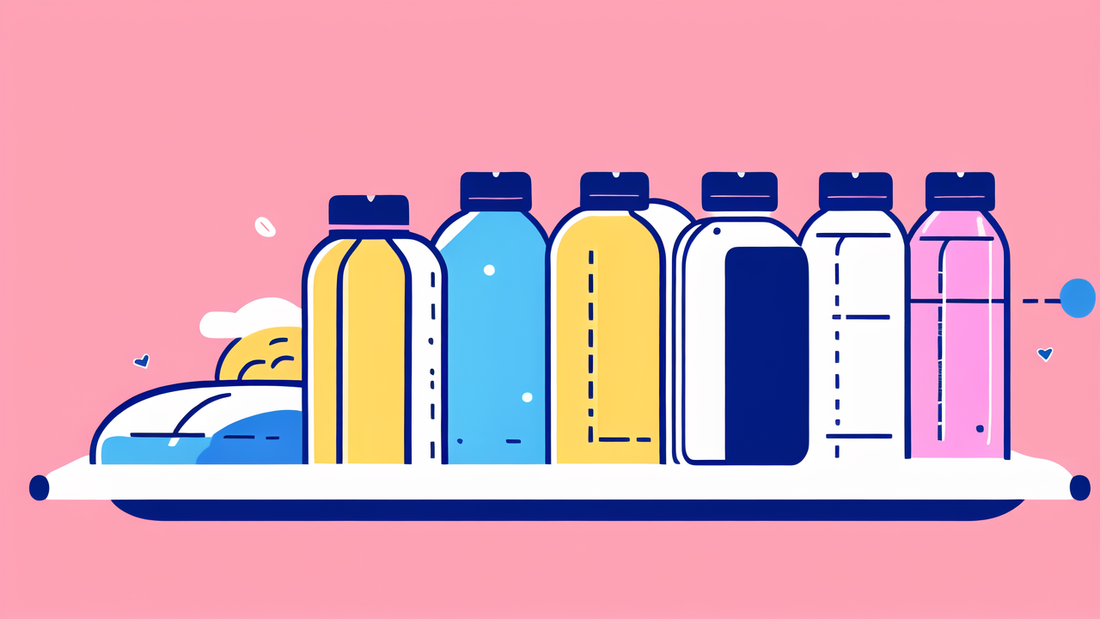
The Ultimate Comparison: Baby Wrap Carriers vs. Structured Carriers for Travel
Understanding the Basics of Baby Wrap Carriers
What is a Baby Wrap Carrier?
A baby wrap carrier is a long piece of fabric that you wrap around your body to create a snug pouch for your baby. It's a simple yet versatile tool for baby-wearing. Wrap carriers distribute your baby's weight evenly across your shoulders and hips. They're made from stretchy or woven fabrics. Stretchy wraps are easier for beginners. Woven wraps offer more support for heavier babies. Wraps can be used from newborn stage to toddlerhood. They allow for multiple carrying positions. These include front, hip, and back carries. Wrap carriers are known for their comfort and closeness.

The Pros and Cons of Using a Wrap Carrier for Travel
Pros of using a wrap carrier for travel:
- Compact and lightweight, easy to pack
- Versatile, can be used in multiple positions
- Provides close contact with baby
- Comfortable for long periods of wear
- Allows for hands-free movement
- Can be used for breastfeeding discreetly
Cons of using a wrap carrier for travel:
- Can be complicated to wrap, especially for beginners
- May be hot in warm climates
- Takes time to put on and take off
- May not provide enough support for heavy babies
- Fabric can drag on the ground when wrapping
- Learning curve for proper use and safety
When traveling, wrap carriers offer flexibility and comfort. They're ideal for navigating crowded airports or exploring new places. However, the learning curve may be challenging for some parents.
Structured Carriers vs. Wrap Carriers: What You Need to Know
Differences in Design and Functionality
Structured carriers and wrap carriers differ significantly in design and functionality. Structured carriers have a fixed shape with buckles, straps, and padded areas. They're easier to put on and take off quickly. Wrap carriers are long pieces of fabric that you tie around your body. They offer more customization in fit and carrying positions.

Structured carriers:
- Have a pre-formed seat for the baby
- Feature adjustable straps and buckles
- Often include storage pockets
- Typically support front and back carries
Wrap carriers:
- Adapt to your body and baby's size
- Allow for multiple carrying positions
- Provide a snug, custom fit
- Can be used from newborn to toddler stages
For travel, structured carriers may be more convenient for quick ins and outs. Wrap carriers excel in comfort for extended wear periods.
Safety and Ergonomics: A Comparative Look
Safety and ergonomics are crucial when choosing a baby carrier for travel. Both types of carriers can be safe when used correctly. Structured carriers often have safety features built-in. These include padded head supports and secure buckles. Wrap carriers rely on proper tying techniques for safety. They support the natural "M" position for baby's hips.
Key safety points for structured carriers:
- Ensure all buckles are securely fastened
- Adjust straps for a snug fit
- Keep baby's face visible and kissable
- Follow weight and age guidelines
Safety considerations for wrap carriers:
- Learn proper wrapping techniques
- Ensure fabric is spread wide for support
- Keep baby high and tight on your body
- Check for secure knots and even tension
Ergonomically, both carrier types can provide good support. Structured carriers have padded straps and waistbands. Wrap carriers distribute weight evenly across your body. The key is proper adjustment and positioning for both carrier and baby.
The Impact on Baby and Mommy's Comfort
Comfort is a top priority for both baby and parent when traveling. Wrap carriers often provide a softer, more natural feel. They mold to your body and baby's shape. This can be soothing for infants who like to be held close. Structured carriers offer more support for heavier babies. They may be more comfortable for parents with back issues.
For babies:
- Wrap carriers offer a womb-like environment
- Structured carriers provide a secure, supported seat
- Both types allow for close contact and bonding
For parents:
- Wrap carriers distribute weight evenly
- Structured carriers have padded straps for comfort
- Both types free up hands for travel tasks
Temperature regulation is another comfort factor. Wrap carriers can be warmer, which is great for cold climates. Structured carriers may offer better airflow in hot weather. Consider your travel destination when choosing.
Making the Right Choice: Travel Baby Gear for Your Family
Assessing Your Travel Needs with a Baby Carrier
Choosing the right baby carrier for travel depends on various factors. Consider your destination, trip duration, and travel style. Think about the activities you'll be doing. Will you be hiking, sightseeing in cities, or spending time at the beach?

Key factors to consider:
- Climate of your destination
- Length of your trip
- Type of transportation you'll use
- Your baby's age and size
- Your comfort level with different carrier types
For short trips or urban travel, a structured carrier might be more convenient. For longer journeys or varied activities, a wrap carrier's versatility could be beneficial. If you're traveling to multiple climates, a carrier that adapts well to temperature changes is ideal.
How to Decide Which Carrier is Best for You
Choosing between a wrap carrier and a structured carrier is a personal decision. It depends on your preferences and needs. Here are some questions to help you decide:
- Are you comfortable learning to use a wrap?
- Do you prefer quick on and off?
- Will you be carrying your baby for long periods?
- Do you need to switch between multiple caregivers?
- Is storage space a concern in your luggage?
If you value versatility and close contact, a wrap carrier might be best. If you prioritize ease of use and quick transitions, a structured carrier could be ideal. Some parents choose to bring both types for different situations.
Packing Tips: Carrier and Other Essentials for Travel
Packing efficiently is crucial when traveling with a baby. Your choice of carrier impacts what else you can bring. Here are some tips for packing smart:
- Roll your wrap carrier to save space
- Use packing cubes to organize baby items
- Pack a lightweight backup carrier if space allows
- Bring a small bag for essentials that attaches to your carrier
Essential items to pack with your carrier:
- Sunhat and sunscreen for baby
- Light blanket for shade or warmth
- Portable changing pad
- Snacks and water for you
- Teething toy or small book for baby
Remember, your carrier can double as a safe sleep space in a pinch. This can be helpful during layovers or unexpected delays. Always prioritize safety and comfort when choosing and packing your travel baby gear.
